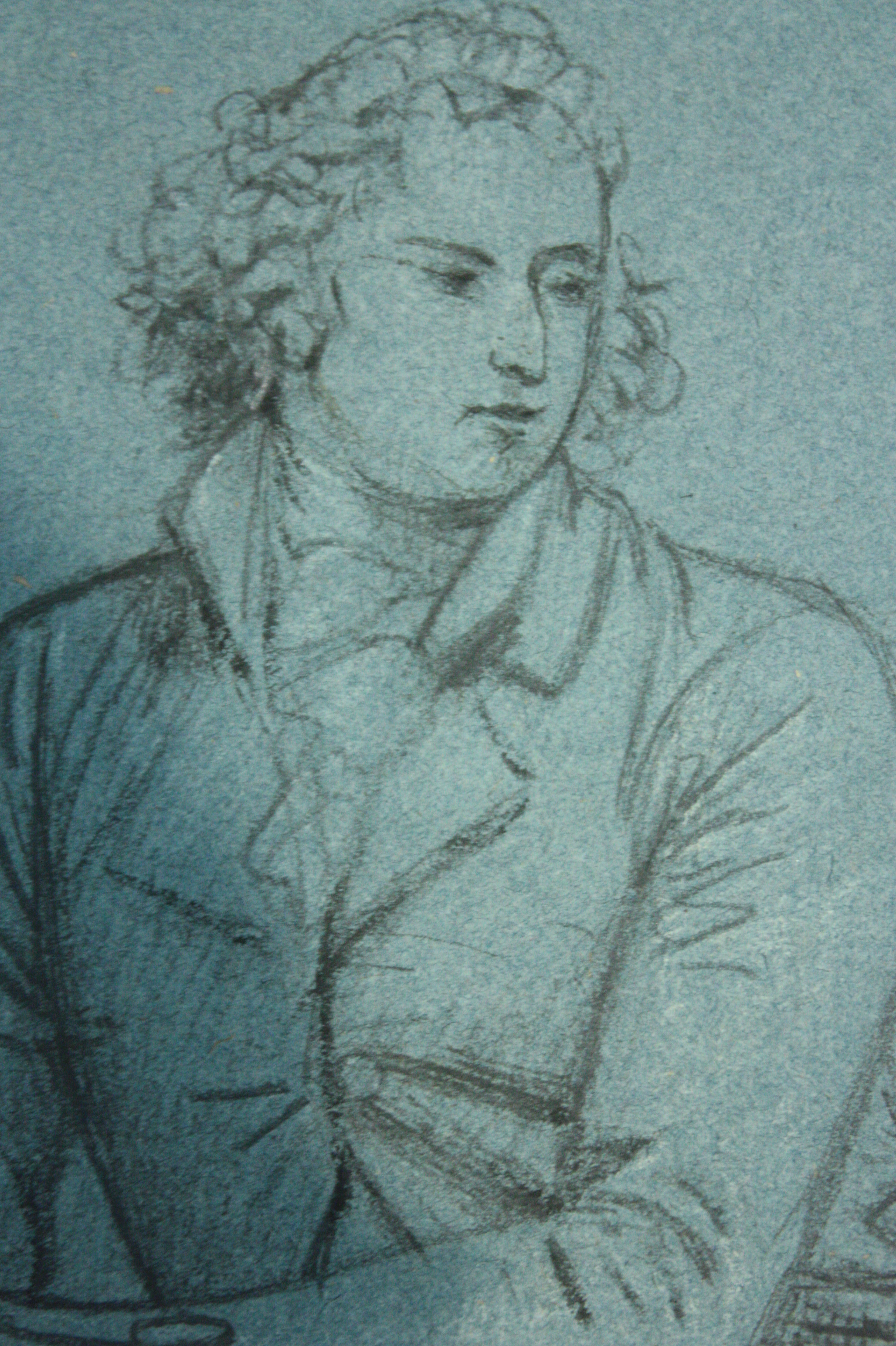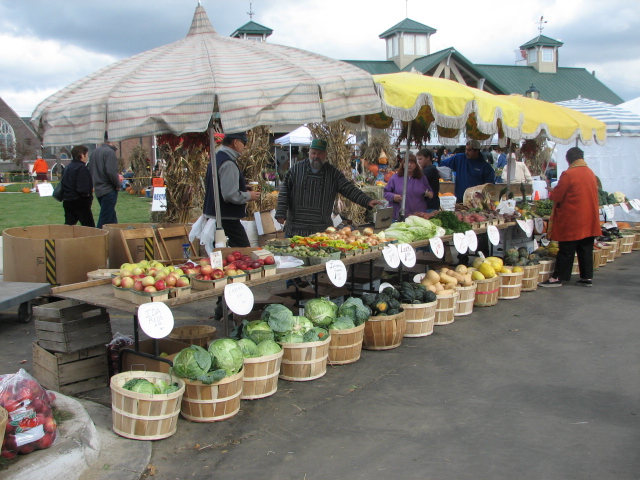|
Huntershill Village
Huntershill Village is located opposite Huntershill House at the top of Crowhill Road in Bishopbriggs, East Dunbartonshire, Scotland. Over forty local businesses operate from the location. It was historically part of the Huntershill Estate, former residence of the political reformer Thomas Muir. It is also the former site of the Huntershill mining and freestone quarry. A Cairn and Martyrs Gate dedicated to Muir and fellow martyrs from England and Scotland were erected at Huntershill Village by John SL Watson, and partly funded by the East Dunbartonshire Council. Visitor facilities includes the Thomas Muir Coffee Shop, art gallery & classes, picture framer, pet and aquatic and garden/gift centre. On 3 September 2009 at 10am, East Dunbartonshire's Provost Eric Gotts formally opened the Bishopbriggs Farmers Market A farmers' market (or farmers market according to the AP stylebook, also farmer's market in the Cambridge Dictionary) is a physical retail marketplace intended to s ... [...More Info...] [...Related Items...] OR: [Wikipedia] [Google] [Baidu] |
Huntershill Village
Huntershill Village is located opposite Huntershill House at the top of Crowhill Road in Bishopbriggs, East Dunbartonshire, Scotland. Over forty local businesses operate from the location. It was historically part of the Huntershill Estate, former residence of the political reformer Thomas Muir. It is also the former site of the Huntershill mining and freestone quarry. A Cairn and Martyrs Gate dedicated to Muir and fellow martyrs from England and Scotland were erected at Huntershill Village by John SL Watson, and partly funded by the East Dunbartonshire Council. Visitor facilities includes the Thomas Muir Coffee Shop, art gallery & classes, picture framer, pet and aquatic and garden/gift centre. On 3 September 2009 at 10am, East Dunbartonshire's Provost Eric Gotts formally opened the Bishopbriggs Farmers Market A farmers' market (or farmers market according to the AP stylebook, also farmer's market in the Cambridge Dictionary) is a physical retail marketplace intended to s ... [...More Info...] [...Related Items...] OR: [Wikipedia] [Google] [Baidu] |
Huntershill House
Huntershill House is a classic example of an 18th-century Laird's house, built c.1769-1781, designed by an unknown architect. The lands of Huntershill were formerly part of the lands of Auchinairn owned by James Lyle; "his circumstances having become embarrassed his Lands of Auchinairn were sold by his Creditors by Public Roup in several lots" on the 15th day of October 1748. From the 1780s it was the family home of the political reformer Thomas Muir, Younger of Huntershill (1765–1799). Auchinairn is now closely entwined with Bishopbriggs, East Dunbartonshire, Scotland. Huntershill house is currently owned by East Dunbartonshire Council, and is a category B listed building, unfortunately during their ownership the building has fallen into disrepair and has ended up being listed on the Buildings at Risk Register for Scotland. History Tenants Huntershill house was built by a Glasgow merchant named James Martin. It was situated beside the old post road from Glasgow to Stirli ... [...More Info...] [...Related Items...] OR: [Wikipedia] [Google] [Baidu] |
Bishopbriggs
Bishopbriggs ( sco, The Briggs; gd, Achadh an Easbaig) is a town in East Dunbartonshire, Scotland. It lies on the northern fringe of Greater Glasgow, approximately from the Glasgow city centre, city centre. Shires of Scotland, Historically in Lanarkshire, the area was once part of the historic Civil parish, parish of Cadder - originally lands granted by William I of Scotland, King William the Lion to the Bishop of Glasgow, Jocelin (Bishop of Glasgow), Jocelin, in 1180. It was later part of the county of Lanarkshire, and then an independent burgh from 1964 to 1975. Today, Bishopbriggs' close geographic proximity to Glasgow now effectively makes it a suburb and commuter town of the city. The town's original Gaelic name ''Coille Dobhair'' reflects the name of the old parish of Cadder, but modern Gaelic usage uses Drochaid an Easbaig, a literal translation of Bishopbriggs. It was ranked the 2nd most desirable postcode in Scotland to live in following a study by the Centre for Econo ... [...More Info...] [...Related Items...] OR: [Wikipedia] [Google] [Baidu] |
East Dunbartonshire
East Dunbartonshire ( sco, Aest Dunbartanshire; gd, Siorrachd Dhùn Bhreatainn an Ear) is one of the 32 council areas of Scotland. It borders the north of Glasgow and contains many of the affluent areas to the north of the city, including Bearsden, Milngavie, Milton Of Campsie, Balmore and Torrance, as well as many of the city's commuter towns and villages. East Dunbartonshire also shares borders with North Lanarkshire, Stirling and West Dunbartonshire. The council area covers parts of the historic counties of Dunbartonshire, Lanarkshire and Stirlingshire. The council area was formed in 1996, as a result of the Local Government etc. (Scotland) Act 1994, from the former Bearsden and Milngavie district and most of the former Strathkelvin district (all areas except Chryston and Auchinloch, which became part of North Lanarkshire council area), within the wider Strathclyde region. Demographics East Dunbartonshire council area has low levels of deprivation, with relatively low u ... [...More Info...] [...Related Items...] OR: [Wikipedia] [Google] [Baidu] |
Thomas Muir (radical)
Thomas Muir (24 August 1765 – 26 January 1799), also known as Thomas Muir the Younger of Huntershill, was a Scottish political reformer and lawyer. Muir graduated from Edinburgh University and was admitted to the Faculty of Advocates in 1787, aged 22. Muir was a leader of the Society of the Friends of the People. He was the most important of the group of two Scotsmen and three Englishmen on the Political Martyrs' Monument, Edinburgh (the others being Thomas Fyshe Palmer, William Skirving, Maurice Margarot and Joseph Gerrald). In 1793 they were sentenced to transportation to Botany Bay Australia for sedition. Two years later in 1796, Muir dramatically escaped from Botany Bay on the American ship the ''Otter'' for America. After a voyage across the uncharted Pacific Ocean the ''Otter'' reached Nootka Sound, Vancouver Island June 1796. The diaries of the first mate Pierre François Péron describe Muir's escape and voyage across the Pacific as far as Monterey, California. Fr ... [...More Info...] [...Related Items...] OR: [Wikipedia] [Google] [Baidu] |
John SL Watson
John is a common English name and surname: * John (given name) * John (surname) John may also refer to: New Testament Works * Gospel of John, a title often shortened to John * First Epistle of John, often shortened to 1 John * Second Epistle of John, often shortened to 2 John * Third Epistle of John, often shortened to 3 John People * John the Baptist (died c. AD 30), regarded as a prophet and the forerunner of Jesus Christ * John the Apostle (lived c. AD 30), one of the twelve apostles of Jesus * John the Evangelist, assigned author of the Fourth Gospel, once identified with the Apostle * John of Patmos, also known as John the Divine or John the Revelator, the author of the Book of Revelation, once identified with the Apostle * John the Presbyter, a figure either identified with or distinguished from the Apostle, the Evangelist and John of Patmos Other people with the given name Religious figures * John, father of Andrew the Apostle and Saint Peter * Pope John ... [...More Info...] [...Related Items...] OR: [Wikipedia] [Google] [Baidu] |
Farmers' Market
A farmers' market (or farmers market according to the AP stylebook, also farmer's market in the Cambridge Dictionary) is a physical retail marketplace intended to sell foods directly by farmers to consumers. Farmers' markets may be indoors or outdoors and typically consist of booths, tables or stands where farmers sell their produce, live animals and plants, and sometimes prepared foods and beverages. Farmers' markets exist in many countries worldwide and reflect the local culture and economy. The size of the market may be just a few stalls or it may be as large as several city blocks. Due to their nature, they tend to be less rigidly regulated than retail produce shops. They are distinguished from public markets, which are generally housed in permanent structures, open year-round, and offer a variety of non-farmer/non-producer vendors, packaged foods and non-food products. History The current concept of a farmers' market is similar to past concepts, but different in relatio ... [...More Info...] [...Related Items...] OR: [Wikipedia] [Google] [Baidu] |
Villages In East Dunbartonshire
A village is a clustered human settlement or community, larger than a hamlet but smaller than a town (although the word is often used to describe both hamlets and smaller towns), with a population typically ranging from a few hundred to a few thousand. Though villages are often located in rural areas, the term urban village is also applied to certain urban neighborhoods. Villages are normally permanent, with fixed dwellings; however, transient villages can occur. Further, the dwellings of a village are fairly close to one another, not scattered broadly over the landscape, as a dispersed settlement. In the past, villages were a usual form of community for societies that practice subsistence agriculture, and also for some non-agricultural societies. In Great Britain, a hamlet earned the right to be called a village when it built a church. [...More Info...] [...Related Items...] OR: [Wikipedia] [Google] [Baidu] |




